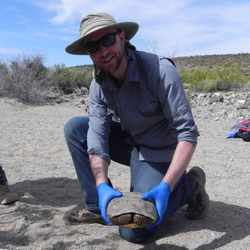Positively selected variants in functionally important regions of TLR7 in Alouatta guariba clamitans with yellow fever virus exposure in Northern Argentina
 Authors:
Authors:
Abstract:
Aims
To evaluate whether the surviving howler monkeys possess advantageous genetic variants
inherited from monkeys alive prior to the YFV outbreak, we explored the relationship
between Toll‐like receptor (TLR) 7 and TLR8 gene variation and YFV susceptibility.
Methods
We used samples from Alouatta individuals in Misiones, Argentina alive before the
YFV outbreak, individuals that died during the outbreak, and individuals that survived
the outbreak and are alive today. We measured genetic divergence between Alouatta
YFV exposure groups and evaluated Alouatta‐specific substitutions for functional consequences.
Results
We did not find different allele frequencies in the post‐YFV exposure Alouatta group
compared to the pre‐exposure group. We identified three nonsynonymous variants in
TLR7 in Alouatta guariba clamitans. Two of these substitutions are under positive
selection in functionally important regions of the gene.
Discussion and Conclusions
Our results did not indicate that surviving howler monkey spossess advantageous genetic
variants at greater frequency than those alive before the YFV outbreak. However, the
positively selected unique coding differences in A. guariba clamitans are in the region
important in pathogen detection which may affect YFV resistance. Morework is necessary
to fully explore this hypothesis
This publication can be viewed here
